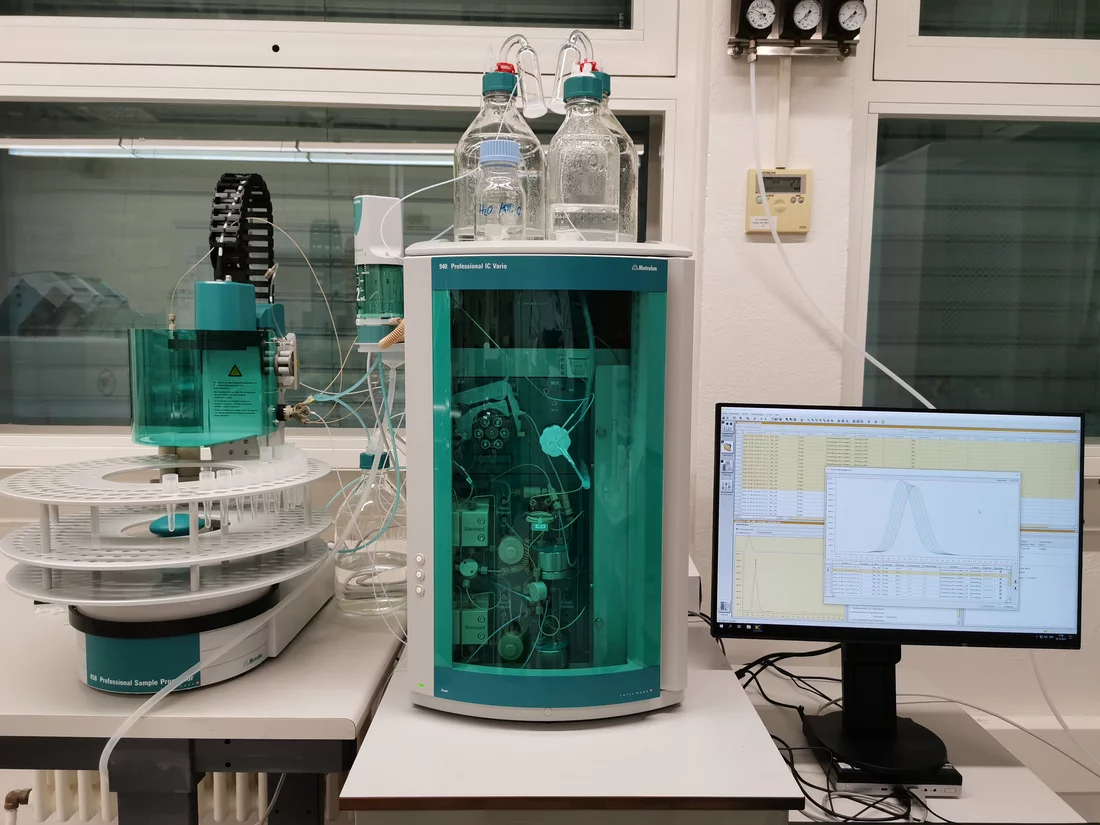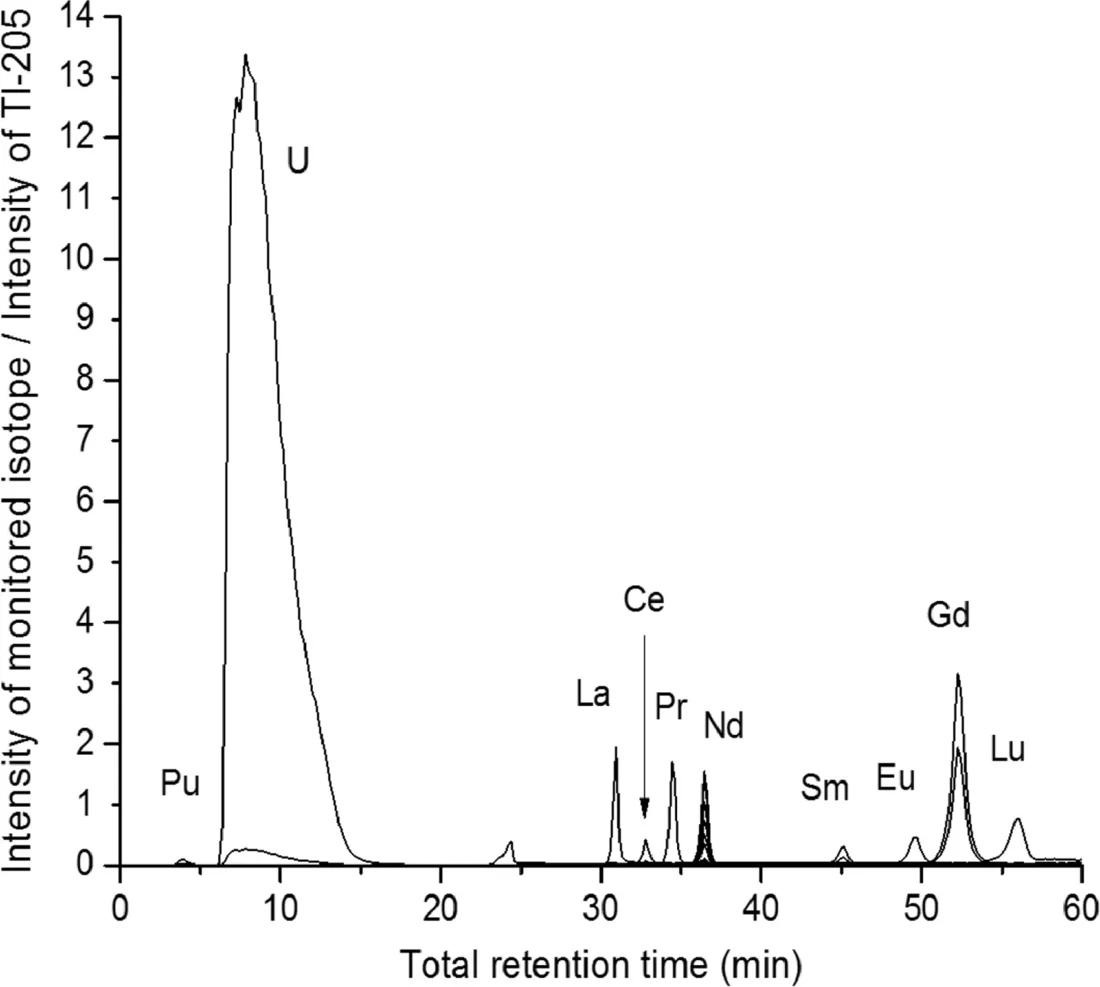Ion Chromatography achieves separation of ions and polar molecules in solution via ionic/molecular radii and charge dependent differences in traveling time through an exchange medium under continuous flow of a compositionally variable or fixed eluent. The versatile new IC (Figure 1) at AHL combines automated eluent production from three chemicals with up to three different small-volume separation channels. Purified sample fractions are either collected for subsequent “offline” analysis or analyzed “online” by coupling the IC directly to the Nu Instruments “Plasma 3” Multi Collector ICP-MS for isotope analysis or to either the Thermo Fisher Scientific “Element 2” Sector Field ICP-MS or the newly acquired Spectro “SPECTROGREEN” ICP-OES for concentration or speciation determination. Despite this great flexibility, only ml-level quantities of liquid waste per sample are produced due to the miniaturized nature of the IC’s separation columns.
The new IC enables advanced isotope and element analyses even for target elements at trace levels by eliminating the samples’ main matrix. Of note, eliminating neighboring elements whose isotopes interfere on the mass of targeted short-lived nuclides, element isolation by IC is particularly useful for the mass spectrometric investigation of activated, contaminated or innately radioactive materials.
AHL’s existing infrastructure including Focused Ion Beam Milling (FIB) and Laser Ablation (LA) with aerosol collection is ideal to produce miniature samples. Combined with the element isolation abilities of the new IC, finely spatially resolved, element-specific isotope and concentration analyses are now possible, for instance local burn-up assessment in nuclear fuel[1] using U, Pu, and fission product concentrations (Figure 2).
With the IC’s capabilities for speciation analysis (e.g., Cr(III)/Cr(VI) determination) and the new “SPECTROGREEN” ICP-OES for swift and reliable wastewater analysis, AHL now offers a comprehensive set-up for routine wastewater examinations providing future autonomy from external contractors for wastewater management.
Dr. Peter Sprung
Hot Laboratory (AHL)
Paul Scherrer Institut
E-mail: peter.sprung@psi.ch
[1] I. Günther-Leopold, N. Kivel, J. Kobler Waldis, B. Wernli, Anal Bioanal Chem 2008, 390, 503, DOI: 10.1007/s00216-007-1644-x.
[2] N. N. Wanna, K. Van Hoecke, A. Dobney, M. Vasile, T. Cardinaels, F. Vanhaecke, Journal of Chromatography A 2019, 460839, DOI: 10.1016/j.chroma.2019.460839.


